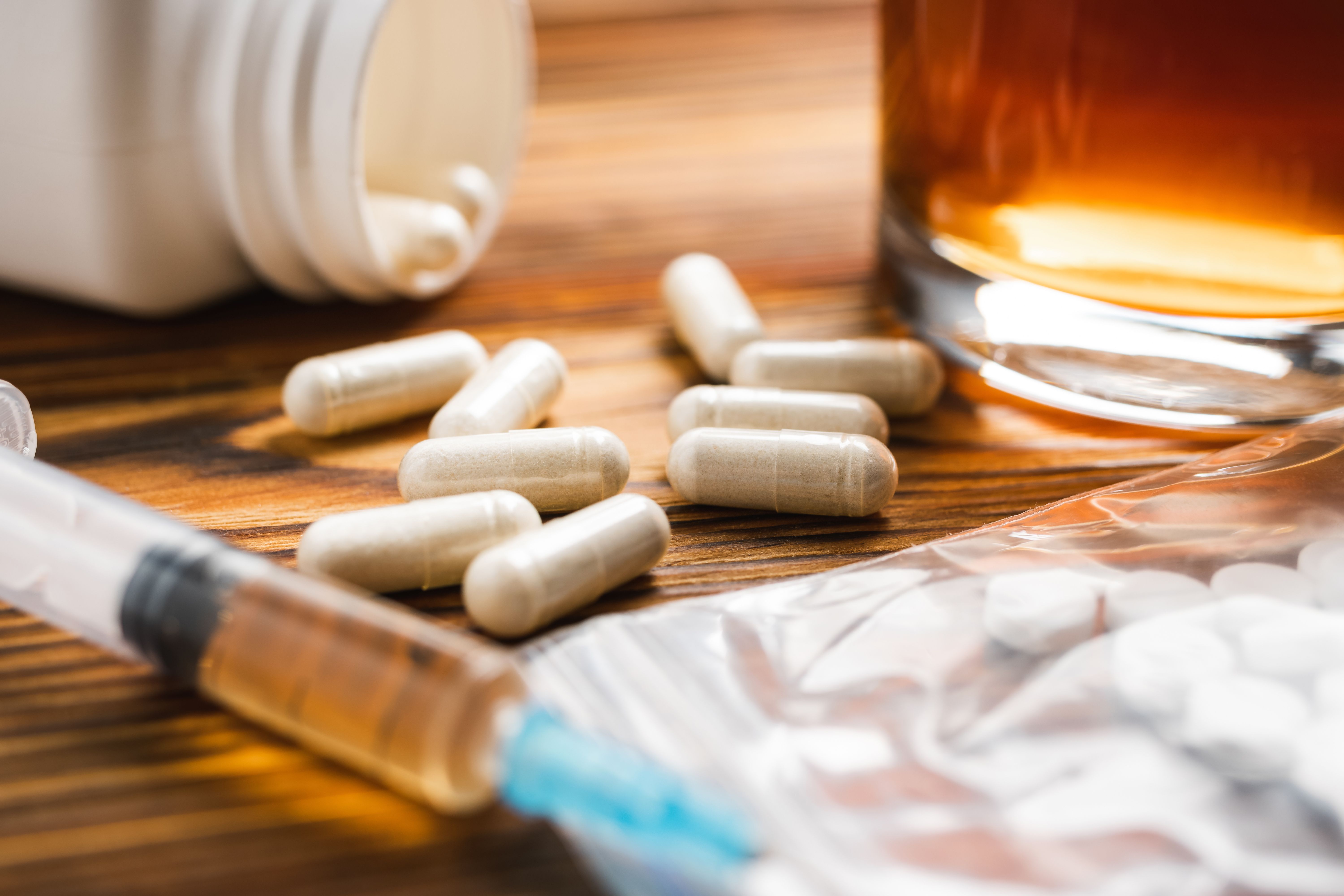Publication
Article
Psychiatric Times
National Household Survey on Drug Abuse to Include Mental Health Data
Author(s):
The National Household Survey on Drug Abuse (NHSDA), the primary source of statistical information on Americans' use of alcohol, tobacco and illicit drugs, will be expanded in upcoming years to include substantial information on mental illness and state-level data on drug abuse, according to Nelba Chavez, Ph.D., administrator of the Substance Abuse and Mental Health Services Administration (SAMHSA).
The National Household Survey on Drug Abuse (NHSDA), the primary source of statistical information on Americans' use of alcohol, tobacco and illicit drugs, will be expanded in upcoming years to include substantial information on mental illness and state-level data on drug abuse, according to Nelba Chavez, Ph.D., administrator of the Substance Abuse and Mental Health Services Administration (SAMHSA).
At the American Psychiatric Association's recent 50th Institute on Psychiatric Services, Chavez explained that she initially viewed the NHSDA as "just another survey." However, her original opinion soon changed. "The more we have done analyses," she said, "I have discovered it is an unbelievable survey."
Conducted since 1971, the survey collects data by administering questionnaires to a representative sample of the United States civilian, noninstitutionalized population ages 12 and older.
"This year we will be expanding the Household Survey, which means we will be interviewing more than 70,000 [people] in the United States [up from 24,505 people interviewed in 1997]. We hope to be able to give you information on a state-by-state basis...and our current plan is to expand the mental health component of the survey, so by the year 2000 or 2001, we can have an ongoing picture of the mental health of the United States."
In discussing the preliminary results released in 1998, Chavez said the 1997 NHSDA revealed "some disturbing connections for something that we already know. One of the things we found is that adolescents who use marijuana are more likely to engage in [destructive] behaviors, such as destroying property, violence, attacking other kids, etc. But the other thing that is very interesting...is marijuana use among our youth is clearly associated with anxiety and depression. Now, we here may all agree that it is true, but outside, on [Capitol] Hill, who will believe this? I have had people who have said to me, 'Take care of the substance abuse problems and mental illness goes away.'"
The data in the 1997 NHSDA enhance a prior SAMHSA report, Adolescent Self-Reported Behaviors and Their Association with Marijuana Use, which was based on NHSDA data from the 1994 through 1996. According to that report, adolescents ages 12 to 17 who use marijuana weekly are nine times more likely than nonusers to experiment with illegal drugs or alcohol, six times more likely to run away from home, five times more likely to steal, almost four times more likely to engage in violence and three times more likely to have thoughts about committing suicide. In a self-report checklist, adolescents also associated social withdrawal, physical complaints, anxiety and depression, attention problems and thoughts of suicide with past-year marijuana use.
According to Chavez, the 1997 NHSDA also showed a "tremendous increase in the use of alcohol among 12- and 13-year-olds." The percentage of young people in that age group reporting alcohol use in the past month climbed from 5.1% in 1996 to 6.7% in 1997, and the percentage of 12- and 13-year-olds reporting binge-drinking (five or more drinks on the same occasion within the past month) climbed from 1.0% in 1996 to 1.1% in 1997. However, the percentage of 12- and 13-year-olds reporting heavy use of alcohol has slightly declined. Although the survey includes only those 12 and older, Chavez said alcohol use begins at much younger ages.
"We have found 9-year-olds who are already alcohol-dependent," she said.
Other data from current and past NHSDAs has enabled researchers to begin examining the prevalence of substance use among racial and ethnic groups, Chavez noted.
"We went back to 1991...and very interesting information came forth on 11 subgroups," she said.
The information was published in a recent report, Prevalence of Substance Use Among Racial/Ethnic Subgroups in the United States, 1991-1993. It provides the first national estimates of illicit drug use, alcohol abuse and dependence, tobacco use, and the need of illicit drug abuse treatment for Asian/Pacific Islanders, Native Americans, Caribbean Americans, Central Americans, Cuban Americans, Mexican Americans, Puerto Ricans, South Americans and other Hispanic Americans.
Relative to the total U.S. population age 12 and older, Native Americans, Mexican Americans, Puerto Ricans and AfricanAmericans exhibited higher prevalences of illicit drug use, heavy cigarette use, alcohol dependence and the need for illicit drugabuse treatment, while Asian/Pacific Islanders, Caribbean Americans, Central Americans and Cuban Americans had lower prevalences.
For example, Native Americans (American Indians and Alaska Natives) exhibited a prevalence of illicit drug use of 19.8%. Rates of illicit drug use among other subgroups were: 13.3% for Puerto Ricans, 13.1% for African Americans, 12.7% for Mexican Americans, 11.8% for Caucasians, 10.7% for South Americans, 10.6% for other Hispanic Americans, 8.2% for Cuban Americans, 7.6% for Caribbean Americans, 6.5% for Asian/Pacific Islanders and 5.7% for Central Americans. By comparison, prevalence of any illicit drug use for the total U.S. population was 11.9%.
A new area of investigation in the 1997 NHSDA involved assessing the impact of voter initiatives on drug use in California and Arizona. In 1996, voters in both states passed propositions to legalize marijuana for certain medical uses. According to Chavez, the NHSDA expanded its sample in those states to gauge the effects.
The survey found that Californians were more likely to perceive greater risk in smoking cigarettes than the remainder of the nation, but both Californians and Arizonans were less likely to perceive greater risk in using marijuana than other residents of the United States. Also, the prevalence of current use of any illicit drugs among people age 12 and older was somewhat higher in California (8.3%) and Arizona (8.4%) as compared with the remainder of the country, excluding those two states (6.1%).
However, a difference between California and Arizona was noted in the number of adolescents using illicit drugs. In Arizona, 16.8% of adolescents ages 12 to 17 were current illicit drug users, compared with 9.1% of youth in California and 11.9% of youth in the remainder of the United States.
Other highlights of the 1997 survey are:
- An estimated 13.9 million Americans (6.4% of the U.S. population age 12 and older) were current users of illicit drugs in 1997 (meaning they had used an illicit drug sometime during the 30 days prior to the interview).
- In 1997, 11.4% of youth reported using illicit drugs in the past month, an increase from 9.0% in 1996.
- An estimated 1.5 million Americans (0.7% of the population age 12 and older) were current cocaine users and 11.1 million (5.1% of the population age 12 and older) were current marijuana/hashish users.
- Current smokers numbered 64 million Americans, with 4.5 million between the ages of 12 and 17. Adolescents who smoked were 12 times as likely to use illicit drugs and 23 times as likely to drink heavily as nonsmoking youth.
- In 1997, approximately 111 million persons age 12 and older were current alcohol users (51% of the total population). Of these, about 31.9 million engaged in binge drinking and about 11.2 million wereheavy drinkers.
- Looking at trends in new use of substances, in 1996, 2.5 million people started using marijuana, 171,000 person starting using heroin, 675,000 starting using cocaine and 1.1 million started using hallucinogens.
(Copies of the reports and summaries of the surveys mentioned in this article may be obtained free of charge by calling SAMHSA's National Clearinghouse for Alcohol andDrug Information at (800)729-6686 or at (www.samhsa.gov)-Ed.





